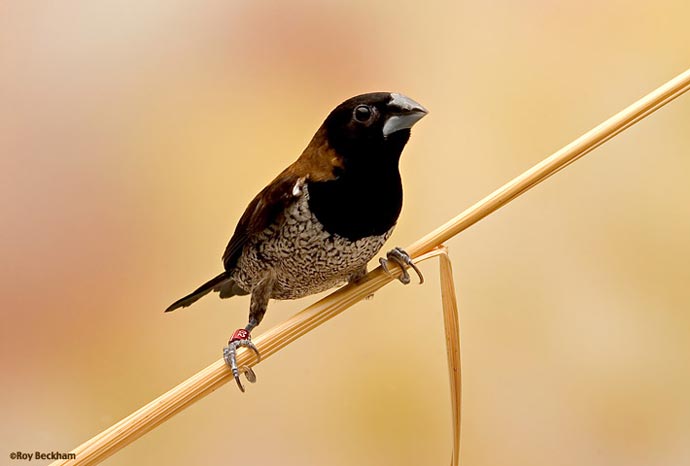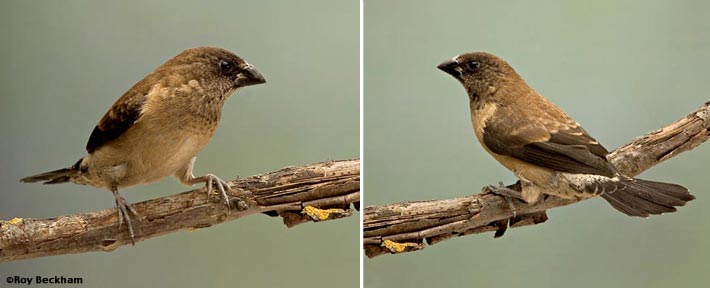




 |
|
|||||||||||||||||||||
 |
|
|
|
|
|
|
|
|
|
|||||||||||||
|
|
|
|
|
|
||||||||||||||||||
|
|
|
|
|
|
|
|
|
|
||||||||||||||
|
|
|
|
|
|
||||||||||||||||||
|
|
|
|
|
|
|
|
|
|
||||||||||||||
|
|
|
|
|
|
||||||||||||||||||
|
|
|
|
|
|
|
 |
|
|||||||||||||||
 |
 |
|
||||||||||||||||||||
|
|
|
|
||||||||||||||||||||
|
|
|
|
|
|
|
|
|
|
|
|
|
|
|
|
|
|
|
|
|
|
|
|
| Moluccan Munia - Lonchura molucca | ||||
 |
||||
| Moluccan Mannikin | ||||
|
Common Names Description Diet Breeder's Notes The nest I provided was a milk carton nest (milk box nest) with the opening cut a little larger across the top of the box (Moluccan box). I provided them with strands of coconut fiber and some softer materials like burlap strands and feathers. While the burlap was incorporated into the nest, it was simply woven into the structure of the nest and not used as a soft lining and the feathers were ignored for the most part. A pair that is ready to nest will usually construct this nest rather rapidly and have it complete in an afternoon. Given unlimited material and a larger platform, I'm sure the Moluccans would actually weave a fairly large nest compared to their size. I limited the amount so that they did not overstuff the milk carton. An average clutch of 4-6 eggs were laid soon after the completion of the nest. The male and female take turns incubating, but the female probably takes a few more shifts on the eggs than the male. They are rather steady on the nest and usually would not leave the nest when I would provided egg food in the morning. They simply poke their head and watch. This steadiness continued even after the chicks hatched at around 14 days. The extremely tiny pink chicks have a little down on them. They fledge in approximately 20 days. The fledglings are soft brown in color with only hints of flecking around the neck (see below). There is no fear in leaving the young with the parents. The parents will not become aggressive with them. However, if you are cage breeding them as individual pairs, you might want to remove them after 3-4 weeks when the parents start getting ready for the next clutch. The young and the parents will all return to the nest at night and the fledglings are not at all concerned with the eggs or any chicks that hatch out, so to save the second clutch, you have to remove the first. The juveniles will attain most of their adult plumage by the time they are 90 days old. I keep all the young with a larger group of adult birds. This allows them to form bonds and learn the appropriate calls and songs. The Moluccans are quite peaceful and even when I temporarily had them a bit overcrowded (I was remodeling the bird room) they remained peaceful and did not start feather plucking as is seen in the African dwarf mannikins like the Rufous-back or Madagascar Mannikins, or even in some of the Asian mannikins like the White-spotted or Chestnut Breasted Mannikins. They were also peaceful in a mixed group setting. Getting along well with some White-spotted mannikins. Additional Notes Robin Restall lists 3 subspecies of Moluccan Munia in Munias and Mannikins. The nominate, Lesser Sundas Black-faced (L. m. propinqua) and the Ceram Black-faced Munia (L.m. vagans). I do not know the status of these subspecies in aviculture. Restall also reports a humorous nickname for the Moluccan in Sulawesi is the 'Deaf Munia' because it has no fear of man even when chased with alarms and rattles used to frighten birds from crops. A friend once described the color of the breast as resembling "Oreo cookie ice cream". If you've ever had it, you know that it is fairly accurate. I did receive some Moluccans that were showing signs of melanism. They later molted out of this condition (photo) I have seen photos from Europe of a Fawn mutation. |

Moluccan Munia juvenile
